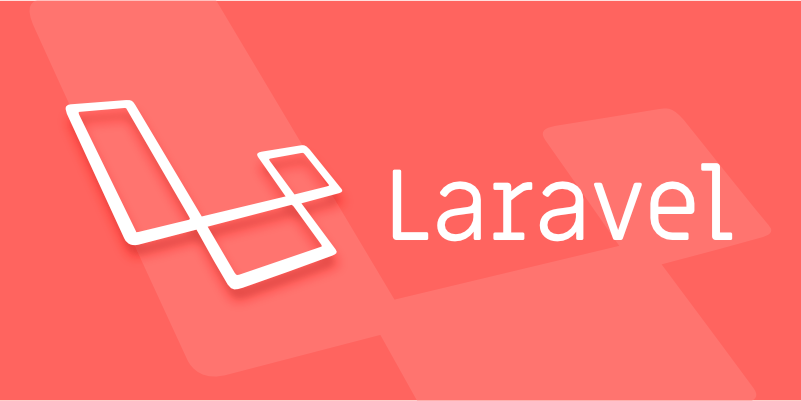Using Facade mocks for testing in Laravel.
mock Facade is used to isolate service calls and avoid real executing external operations 1. Use Mockery's shouldReceive to define the expected method 2. Use andReturnSelf to maintain chain calls 3. Set the number of calls through once, etc. 4. Use with to check explicitly for parameter verification 5. Use dataProvider to reuse mock logic Facade mock limitations include only applicable to static calls overuse exposed code coupling and the inability to automatically verify parameter content.

Using Facade's mock in Laravel testing is a common practice, especially when you want to isolate certain service calls and avoid real external operations (such as sending emails, calling APIs). Mocking Facade directly can make your tests focus more on the logic itself.

Why do you need mock Facade?
Many core functions in Laravel provide simple access methods through Facade, such as Mail , Event , Cache , etc. But in testing, we often don't want them to actually execute, for example:
- Don't want to actually send emails in the test
- Don't want the test to fail because of cache failure
- Don't want to trigger real event monitoring
At this time, you can mock these Facades to simulate behavior, making the test more controllable.

How to correctly mock Facade?
Laravel provides an easy way to mock Facade, usually using the Mockery library in the test class. Take Mail facade as an example:
use Illuminate\Support\Facades\Mail;
use Mockery\MockInterface;
public function test_send_email_but_not_really()
{
Mail:: shouldReceive('to')->once()->andReturnSelf();
Mail:: shouldReceive('send')->once();
// Call your method, it will use Mail facade to send email $this->post('/send-email', $data);
// I won't send an email here, but it can verify whether the corresponding method has been called}Several key points:

-
shouldReceive()is used to define the method you expect to be called -
andReturnSelf()helps chain calls not interrupted - You can set the number of calls, such as
once()ornever() - If you are using a specific service instead of Facade, you can also use the
$this->mock()method to inject mock instance
Pay attention to the limitations of Facade mock
Although Facade mock is convenient, it is not omnipotent:
- Only suitable for static calls : if you are calling the service using dependency injection, you should use the interface to bind the mock, not Facade
- Easily overused : If you mock a lot of Facades for each test, it means that the code coupling is too high and may require refactoring
- Unable to capture parameter content : Unless the parameters are explicitly checked, it is impossible to know whether the incoming content is correct.
For example, if you want to confirm whether Mail::to() has transmitted the correct email address, you need to write it like this:
Mail::shouldReceive('to')
->with('test@example.com')
->once()
->andReturnSelf();Otherwise, even if the method is called, there is no guarantee that the parameters are expected.
Tips: Used in conjunction with PHPUnit's data provider
If you have multiple test scenarios that require different behaviors of mocking the same Facade, you can combine @dataProvider to reuse the mock setting logic:
/**
* @dataProvider mailProvider
*/
public function test_send_different_emails($email, $expectedCount)
{
Mail:: shouldReceive('to')->with($email)->times($expectedCount);
Mail::shouldReceive('send');
// Execute action}
public function mailProvider()
{
Return [
['user1@example.com', 1],
['user2@example.com', 2],
];
}This reduces duplicate code and makes it easier to maintain test logic in different situations.
Basically that's it. Facade mock is a very practical tool in testing, but it should be used properly and don't abuse it.
The above is the detailed content of Using Facade mocks for testing in Laravel.. For more information, please follow other related articles on the PHP Chinese website!

Hot AI Tools

Undress AI Tool
Undress images for free

Undresser.AI Undress
AI-powered app for creating realistic nude photos

AI Clothes Remover
Online AI tool for removing clothes from photos.

Clothoff.io
AI clothes remover

Video Face Swap
Swap faces in any video effortlessly with our completely free AI face swap tool!

Hot Article

Hot Tools

Notepad++7.3.1
Easy-to-use and free code editor

SublimeText3 Chinese version
Chinese version, very easy to use

Zend Studio 13.0.1
Powerful PHP integrated development environment

Dreamweaver CS6
Visual web development tools

SublimeText3 Mac version
God-level code editing software (SublimeText3)
 What is Configuration Caching in Laravel?
Jul 27, 2025 am 03:54 AM
What is Configuration Caching in Laravel?
Jul 27, 2025 am 03:54 AM
Laravel's configuration cache improves performance by merging all configuration files into a single cache file. Enabling configuration cache in a production environment can reduce I/O operations and file parsing on each request, thereby speeding up configuration loading; 1. It should be enabled when the application is deployed, the configuration is stable and no frequent changes are required; 2. After enabling, modify the configuration, you need to re-run phpartisanconfig:cache to take effect; 3. Avoid using dynamic logic or closures that depend on runtime conditions in the configuration file; 4. When troubleshooting problems, you should first clear the cache, check the .env variables and re-cache.
 How to mock objects in Laravel tests?
Jul 27, 2025 am 03:13 AM
How to mock objects in Laravel tests?
Jul 27, 2025 am 03:13 AM
UseMockeryforcustomdependenciesbysettingexpectationswithshouldReceive().2.UseLaravel’sfake()methodforfacadeslikeMail,Queue,andHttptopreventrealinteractions.3.Replacecontainer-boundserviceswith$this->mock()forcleanersyntax.4.UseHttp::fake()withURLp
 How to implement a referral system in Laravel?
Aug 02, 2025 am 06:55 AM
How to implement a referral system in Laravel?
Aug 02, 2025 am 06:55 AM
Create referrals table to record recommendation relationships, including referrals, referrals, recommendation codes and usage time; 2. Define belongsToMany and hasMany relationships in the User model to manage recommendation data; 3. Generate a unique recommendation code when registering (can be implemented through model events); 4. Capture the recommendation code by querying parameters during registration, establish a recommendation relationship after verification and prevent self-recommendation; 5. Trigger the reward mechanism when recommended users complete the specified behavior (subscription order); 6. Generate shareable recommendation links, and use Laravel signature URLs to enhance security; 7. Display recommendation statistics on the dashboard, such as the total number of recommendations and converted numbers; it is necessary to ensure database constraints, sessions or cookies are persisted,
 How to run a Laravel project?
Jul 28, 2025 am 04:28 AM
How to run a Laravel project?
Jul 28, 2025 am 04:28 AM
CheckPHP>=8.1,Composer,andwebserver;2.Cloneorcreateprojectandruncomposerinstall;3.Copy.env.exampleto.envandrunphpartisankey:generate;4.Setdatabasecredentialsin.envandrunphpartisanmigrate--seed;5.Startserverwithphpartisanserve;6.Optionallyrunnpmins
 How to seed a database in Laravel?
Jul 28, 2025 am 04:23 AM
How to seed a database in Laravel?
Jul 28, 2025 am 04:23 AM
Create a seeder file: Use phpartisanmake:seederUserSeeder to generate the seeder class, and insert data through the model factory or database query in the run method; 2. Call other seeder in DatabaseSeeder: register UserSeeder, PostSeeder, etc. in order through $this->call() to ensure the dependency is correct; 3. Run seeder: execute phpartisandb:seed to run all registered seeders, or use phpartisanmigrate:fresh--seed to reset and refill the data; 4
 How to build a REST API with Laravel?
Jul 30, 2025 am 03:41 AM
How to build a REST API with Laravel?
Jul 30, 2025 am 03:41 AM
Create a new Laravel project and start the service; 2. Generate the model, migration and controller and run the migration; 3. Define the RESTful route in routes/api.php; 4. Implement the addition, deletion, modification and query method in PostController and return the JSON response; 5. Use Postman or curl to test the API function; 6. Optionally add API authentication through Sanctum; finally obtain a clear structure, complete and extensible LaravelRESTAPI, suitable for practical applications.
 How to implement feature flags in a Laravel app?
Jul 30, 2025 am 01:45 AM
How to implement feature flags in a Laravel app?
Jul 30, 2025 am 01:45 AM
Chooseafeatureflagstrategysuchasconfig-based,database-driven,orthird-partytoolslikeFlagsmith.2.Setupadatabase-drivensystembycreatingamigrationforafeature_flagstablewithname,enabled,andrulesfields,thenrunthemigration.3.CreateaFeatureFlagmodelwithfilla
 What are Repository Contracts in Laravel?
Aug 03, 2025 am 12:10 AM
What are Repository Contracts in Laravel?
Aug 03, 2025 am 12:10 AM
The Repository pattern is a design pattern used to decouple business logic from data access logic. 1. It defines data access methods through interfaces (Contract); 2. The specific operations are implemented by the Repository class; 3. The controller uses the interface through dependency injection, and does not directly contact the data source; 4. Advantages include neat code, strong testability, easy maintenance and team collaboration; 5. Applicable to medium and large projects, small projects can use the model directly.







